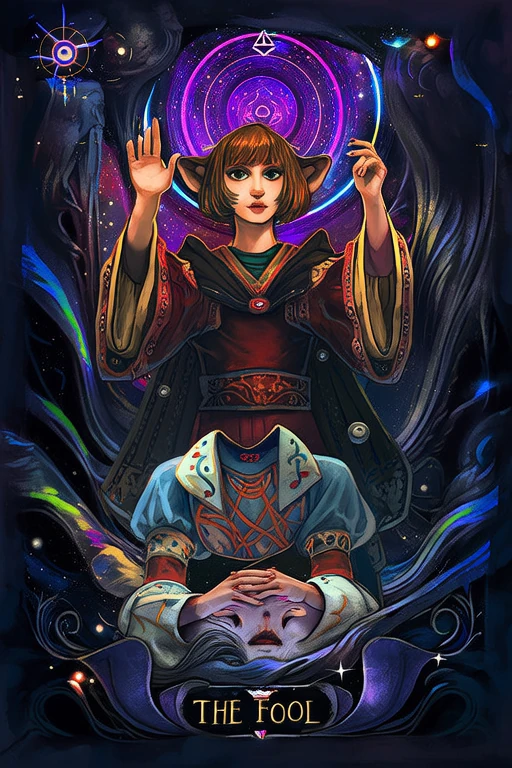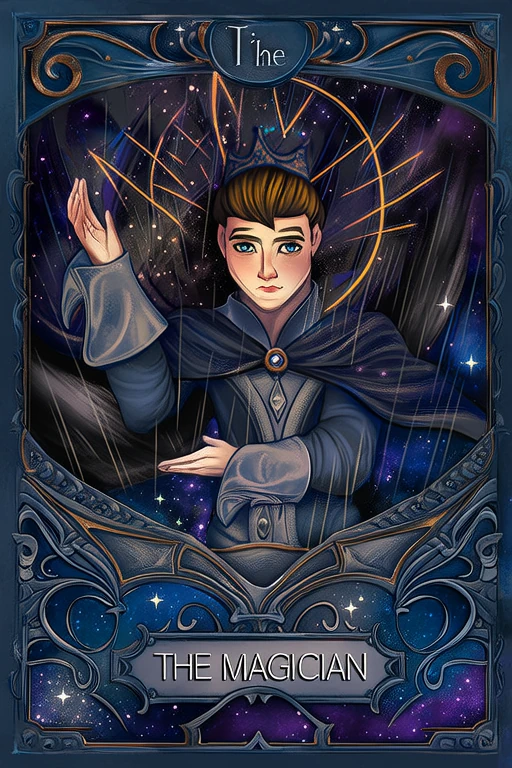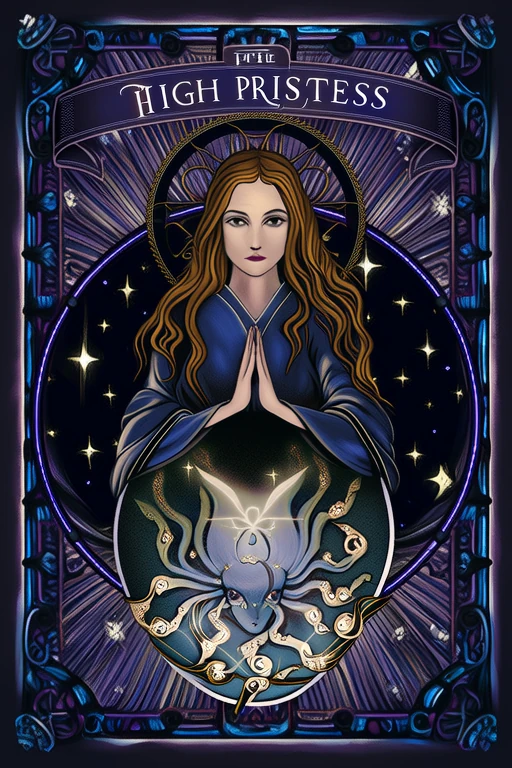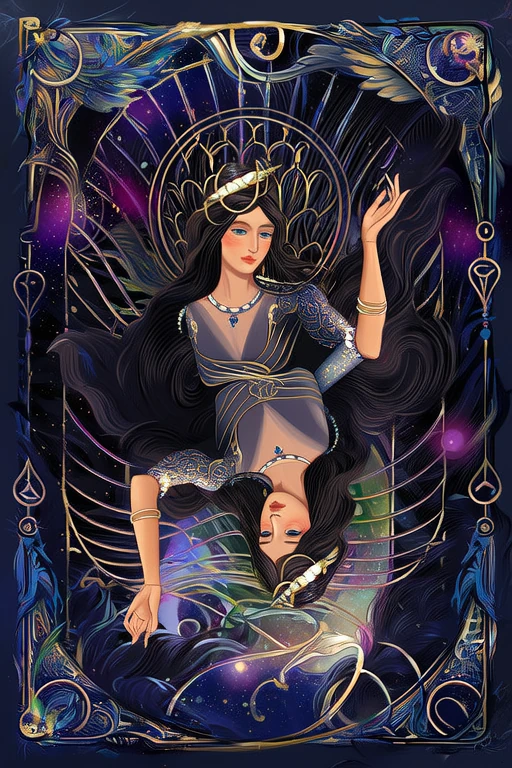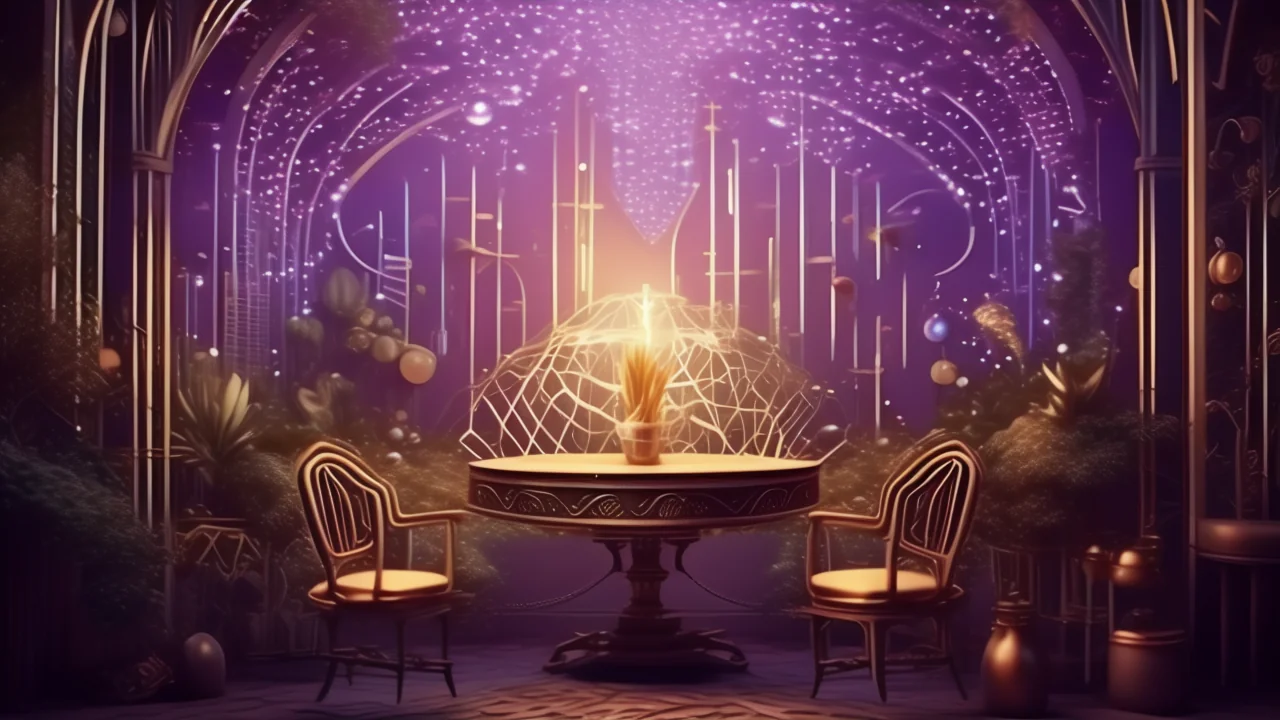
The Moon
Discover the deep meaning of The Moon with our free AI-powered tarot interpretation. Get instant, accurate readings based on advanced tarot knowledge.
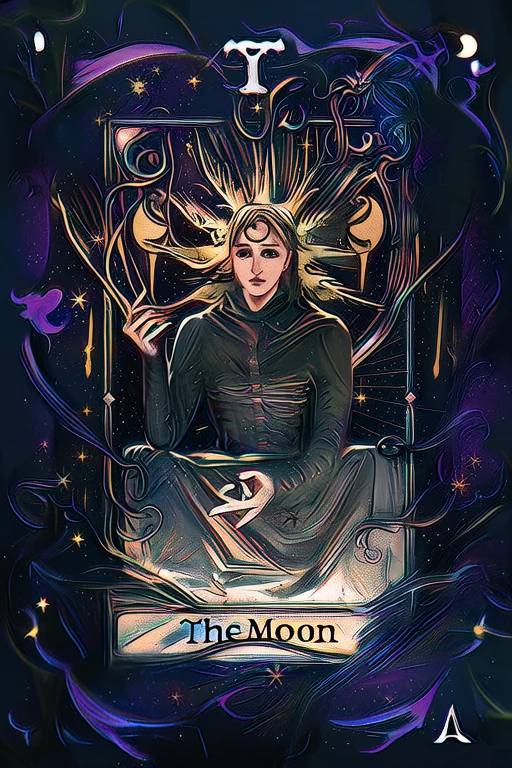
Keywords
Upright Meaning
Illusion, fear, anxiety, subconscious, intuition
Reversed Meaning
Release of fear, repressed emotion, inner confusion
Full Interpretation
The Moon represents illusion, intuition, and the mysteries of the subconscious.
In-Depth Analysis
📜 Historical Background
The Moon (月亮) is the 18th card in the Major Arcana of the tarot deck and has captivated readers and scholars alike for centuries. Its origins trace back to early 15th-century Europe, particularly in Italy and France, where tarot cards were initially used for playing games before evolving into tools for divination and spiritual insight. The Moon’s earliest known depiction appears in the Visconti-Sforza tarot deck, created in the 1400s, where it is illustrated as a celestial body above a tranquil landscape, often flanked by two towers or pillars. This imagery has evolved over time, reflecting changing cultural and symbolic interpretations.
In mythology and folklore, The Moon card is often linked to lunar deities such as Selene (Greek), Luna (Roman), and Chang’e (Chinese), who represent mystery, intuition, and the subconscious. In medieval Europe, the moon was associated with the feminine divine and the cyclical nature of life, death, and rebirth. These associations influenced the symbolic interpretation of The Moon in tarot, representing the hidden, emotional, and often confusing aspects of human experience.
The imagery of The Moon has undergone significant transformation across different tarot decks. In the Rider-Waite-Smith (RWS) deck, the most widely used in modern tarot, the card shows a full moon shining above a winding path, with a crayfish emerging from water, a dog and a wolf howling, and two pillars framing the scene. This version, designed by A.E. Waite and illustrated by Pamela Colman Smith in 1909, introduced a more symbolic and psychologically rich interpretation that has influenced countless decks since.
Throughout history, various tarot traditions have interpreted The Moon differently. In the Marseille tradition, the card is more minimalistic, often showing a moon above a landscape with two towers, emphasizing its connection to duality and illusion. In contrast, more esoteric decks like the Thoth Tarot, developed by Aleister Crowley and Lady Frieda Harris, incorporate astrological and alchemical symbolism, linking The Moon to the zodiac sign Pisces and the concept of illusion and transformation.
Culturally, The Moon holds diverse meanings. In Eastern traditions, particularly in Chinese and Japanese symbolism, the moon is often associated with yin energy, intuition, and inner reflection. In Western occult traditions, it is tied to the subconscious, dreams, and psychic insight. These cultural variations enrich the card’s interpretative depth, making it a powerful symbol across spiritual and mystical practices worldwide.
Symbolism & Imagery
The Moon card is rich in symbolic meaning, with each element of its imagery contributing to its complex interpretation. At the center of most depictions is the moon itself, often full and luminous, casting a silver glow over the scene. The moon symbolizes the subconscious mind, intuition, and the hidden truths that lie beneath the surface of conscious awareness. Its light is not as clear or direct as the sun’s, representing the ambiguity and mystery that often accompany emotional and psychic experiences.
Beneath the moon, a winding path typically leads into the distance, symbolizing the journey of life and the often unclear direction we must navigate by intuition alone. In the RWS version, two towers or pillars flank the scene, representing the dualities of life—light and dark, conscious and unconscious, masculine and feminine. These pillars may also symbolize the gateway between the material and spiritual worlds.
A prominent feature in many depictions is the presence of two animals: a dog and a wolf, or sometimes a dog and a fox. These creatures represent the domestic and wild aspects of the psyche—the tamed emotions and the primal instincts. Their howling at the moon reflects the call of the subconscious, urging the querent to pay attention to their inner voice.
In the foreground, water often flows or ripples, symbolizing the emotional realm and the ever-changing nature of feelings. Emerging from the water in the RWS deck is a crayfish or lobster, symbolizing the need to retreat into the depths of the self to uncover hidden truths. Water, in tarot, is closely associated with the element of emotions and the unconscious, reinforcing The Moon’s role as a card of inner exploration.
Colors also play a significant role in The Moon’s symbolism. The predominant use of silver, blue, and gray tones evokes a sense of mystery, calm, and introspection. Silver is associated with the moon and feminine energy, while blues represent depth, intuition, and tranquility. These hues contribute to the card’s dreamlike and sometimes unsettling atmosphere.
In different cultural contexts, The Moon’s meaning can shift. In Eastern traditions, it often symbolizes harmony, reflection, and the feminine principle. In contrast, Western interpretations tend to emphasize its more shadowy qualities—deception, confusion, and fear. However, both perspectives agree on its connection to the subconscious and the importance of inner guidance.
When The Moon appears upright in a reading, it generally signifies intuition, dreams, and hidden truths. It encourages the querent to trust their instincts and delve deeper into their emotional world. In reverse, The Moon may indicate confusion, denial, or deception—either from oneself or others. It suggests a need to confront fears and illusions that may be clouding judgment.
The Moon also connects with other cards in the Major Arcana, particularly The High Priestess (II), who embodies the intuitive and mysterious feminine energy, and The Star (XVII), which follows The Moon in the sequence and represents hope and clarity after a period of uncertainty. Together, these cards form a narrative of emotional exploration, confusion, and eventual enlightenment.
Psychological Insights
From a psychological perspective, The Moon card resonates deeply with the theories of Carl Jung, particularly his concept of the shadow and the collective unconscious. Jung believed that the unconscious mind contains repressed thoughts, emotions, and instincts—elements that The Moon card often symbolizes. As a representation of the subconscious, The Moon invites individuals to explore their inner landscapes, confront hidden fears, and integrate aspects of the self that may have been ignored or denied.
In modern life, The Moon encourages individuals to trust their intuition and inner wisdom. In a world filled with external pressures and distractions, this card serves as a reminder to slow down and listen to one’s inner voice. It is particularly relevant in decision-making processes where logic may not provide clear answers, urging a reliance on gut feelings and emotional intelligence.
For personal growth and self-awareness, The Moon is a powerful tool for introspection. It challenges individuals to face their fears, acknowledge their emotional patterns, and embrace the complexity of their inner world. By doing so, it fosters greater self-understanding and emotional maturity, helping individuals navigate life’s uncertainties with more clarity and confidence.
In therapeutic and counseling settings, The Moon can be a valuable guide for clients dealing with anxiety, confusion, or unresolved emotional issues. Therapists and counselors may use the card to encourage clients to explore their dreams, fears, and subconscious motivations. It can also be a useful prompt for journaling or guided meditation, helping clients access deeper layers of their psyche.
In modern spiritual practices, The Moon is often associated with lunar rituals, dream work, and shadow integration. Many practitioners use the card during full moon ceremonies to release old patterns and set intentions for emotional healing. It is also a key symbol in dream interpretation, where it represents the messages and insights that come through the subconscious mind during sleep.
Ultimately, The Moon card serves as a bridge between the conscious and unconscious realms, offering guidance through the murky waters of emotion and intuition. Whether used for personal reflection, therapeutic exploration, or spiritual development, it remains a timeless symbol of inner truth and the transformative power of self-awareness.
Correspondences
The Moon card is deeply connected to astrological and elemental influences that enhance its symbolic meaning. Astrologically, The Moon is ruled by the planet Moon itself, which governs emotions, intuition, and the subconscious mind. In astrology, the Moon is associated with the sign of Cancer, a water sign known for its emotional depth and nurturing nature. This connection reinforces The Moon’s themes of sensitivity, inner reflection, and the ebb and flow of emotional tides.
In terms of gemstones and crystals, The Moon is linked to stones that promote emotional healing and psychic insight, such as moonstone, selenite, and labradorite. Moonstone, named after the celestial body, is particularly significant, as it is believed to enhance intuition and balance emotions. Selenite, named after the Greek moon goddess Selene, is associated with clarity, purification, and spiritual connection.
Herbs and essential oils connected to The Moon include lavender, chamomile, jasmine, and white sage. These botanicals are often used in rituals, meditation, and aromatherapy to promote calm, intuition, and emotional healing. Essential oils such as sandalwood, ylang-ylang, and clary sage are also aligned with The Moon’s energy, supporting relaxation and inner exploration.
The Moon corresponds to the element of Water, which governs emotions, intuition, and the subconscious. This alignment makes The Moon a powerful card for emotional introspection and spiritual insight. In terms of timing, The Moon is often associated with nighttime, particularly the full moon phase, which is believed to amplify psychic energy and emotional sensitivity.
In energy work and chakra healing, The Moon is linked to the Sacral Chakra (Svadhisthana), which governs emotions, creativity, and sexuality, as well as the Crown Chakra (Sahasrara), which connects to higher consciousness and spiritual awareness. Balancing these chakras can help individuals align with The Moon’s energy for deeper emotional clarity and spiritual insight.
Numerologically, The Moon is numbered 18 in the Major Arcana. The number 18 reduces to 9 (1+8=9), which signifies completion, wisdom, and spiritual enlightenment. This adds a layer of transformation and closure to The Moon’s message, suggesting that through emotional exploration and self-awareness, one can reach a deeper understanding of the self and the world.
❓ Frequently Asked Questions
What does The Moon mean in a love reading? In love and relationships, The Moon often indicates emotional uncertainty, hidden feelings, or unspoken truths. It may suggest that one or both partners are not being fully honest or that emotions are clouded by fear or confusion. When reversed, it can point to deception or unresolved issues that need to be addressed for the relationship to grow.
Is The Moon always a negative card? No, The Moon is not inherently negative. While it can indicate confusion, fear, or illusion, it also represents intuition, dreams, and emotional depth. Its meaning depends on the context of the reading and the surrounding cards. When embraced as a call for inner exploration, The Moon can lead to profound self-awareness and emotional healing.
How should beginners interpret The Moon? Beginners often mistake The Moon for a purely negative or ominous card. However, it is more about navigating uncertainty and trusting one’s intuition. For new readers, it’s helpful to consider the card as a prompt to look beyond surface appearances and explore the emotional or subconscious factors influencing a situation.
What are effective spreads for reading The Moon? The Moon is particularly powerful in spreads that explore the subconscious, such as the Past-Present-Future layout, the Celtic Cross, or custom spreads focused on dreams, fears, or emotional blocks. A three-card spread asking 'What am I feeling?', 'What am I afraid of?', and 'What do I need to know?' can be especially insightful when The Moon appears.
How does The Moon interact with other cards? The Moon works closely with The High Priestess (II), reinforcing themes of intuition and mystery. When paired with The Sun (XIX), it suggests that clarity and joy will follow a period of uncertainty. With The Tower (XVI), it may indicate that hidden truths are about to surface. However, when combined with The Devil (XV), it can warn of illusions or addictive behaviors clouding judgment.
What practical advice does The Moon offer? The Moon encourages individuals to trust their intuition, confront hidden fears, and seek emotional clarity. It advises caution in situations where things may not be as they seem and recommends paying attention to dreams, gut feelings, and subconscious messages. Whether upright or reversed, The Moon serves as a reminder to look inward and embrace the journey of self-discovery.
